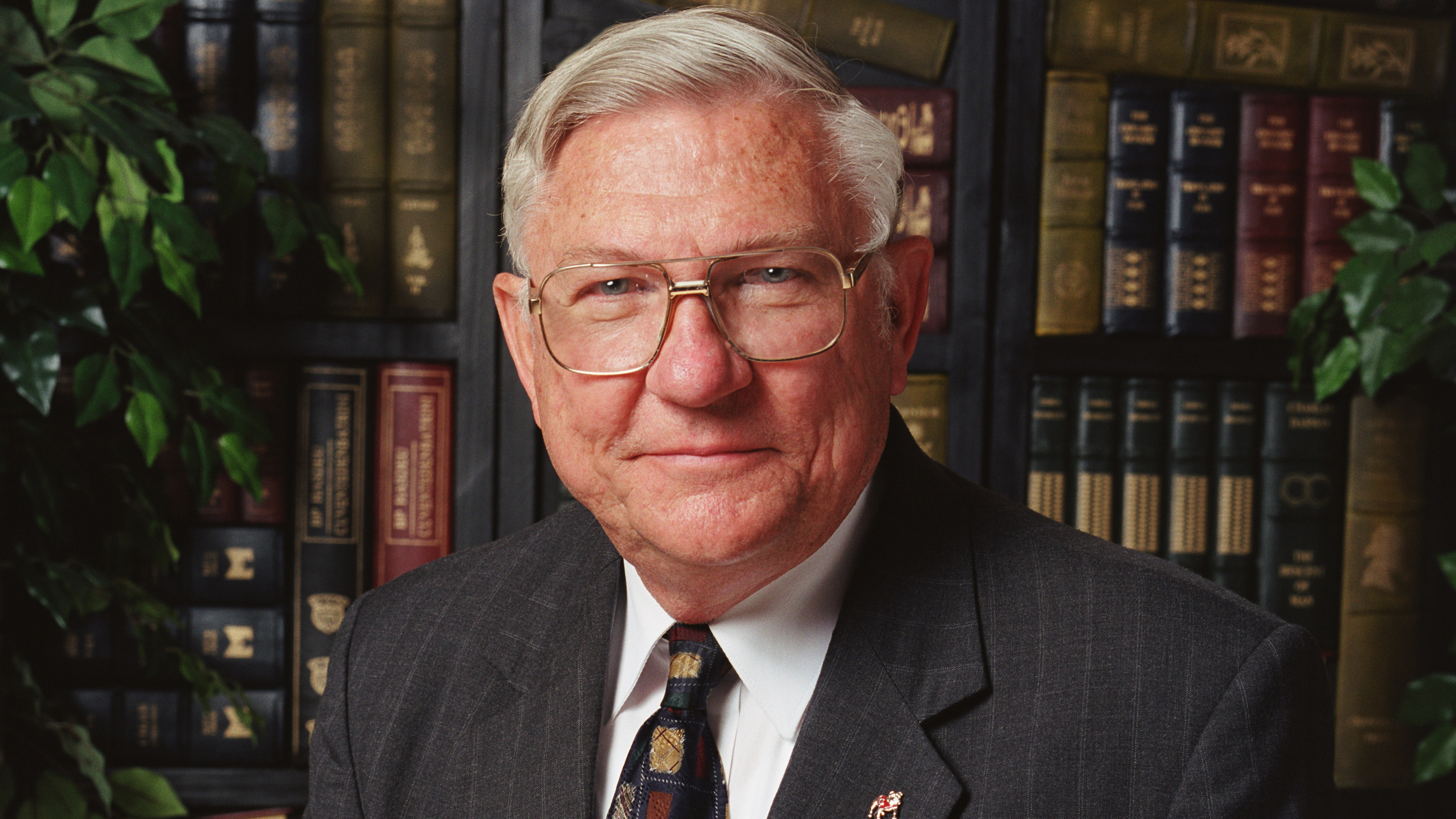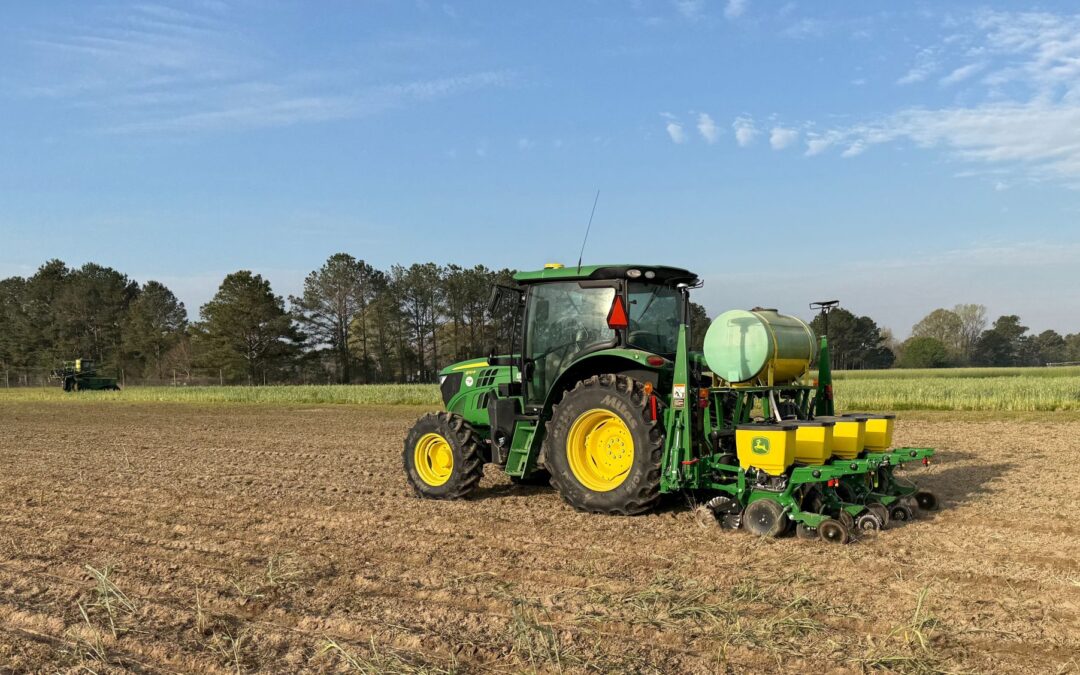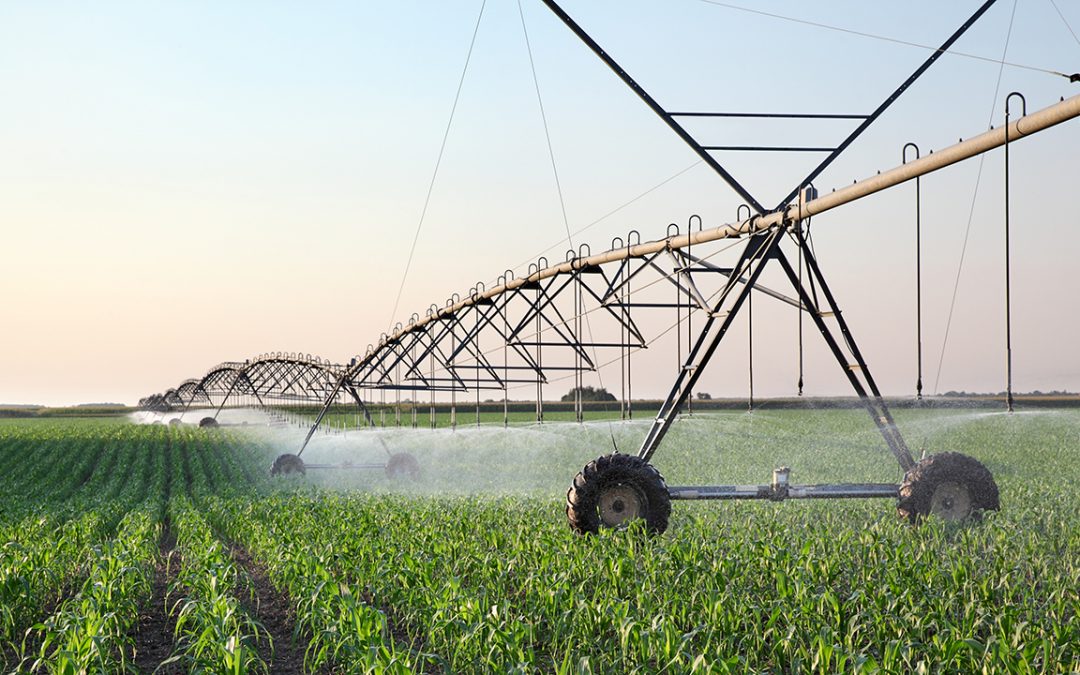What has agricultural research done for you?
It’s a fair enough question, and one that many of us might have a problem answering. But the answers are numerous enough to fill a book or two, which is exactly what Gale Buchanan has done.
Buchanan, who spent the first 21 years of his career with Auburn University, presented a lecture on Sept. 22, at the Auburn University Hotel and Conference Center as part of the College of Agriculture’s 150th year celebration.
Sixteen of Buchanan’s years at Auburn were spent as a professor in the Department of Agronomy and Soils, followed by five years as dean and director of the Alabama Agricultural Experiment Station. He also served as dean and director emeritus of the College of Agricultural and Environmental Sciences at the University of Georgia. In addition, he served as chief scientist and undersecretary for Research, Education, and Economics in the U.S. Department of Agriculture.
The initial purpose of the book, entitled “Feeding the World: Agricultural Research in the Twenty-First Century,” was to help build a better case for funding agricultural research, Buchanan said. A second book followed, “Branch Research Stations in Agriculture: History, Development, Operation, and Future.”
“We do a fantastic job of supporting one another in what we’re doing, but we do an absolutely lousy job of telling the public about the good things we do in agricultural research,” he said.
Buchanan began the book project by requesting that each research station submit a list of its major accomplishments.
“As I began to collect research accomplishments, one thing became clear and stood out— the breadth of agricultural research that was undertaken,” he said. “One of my first conclusions was that while a case could be made for all areas of research, two areas stood out as particularly relevant and pivotal for the success of agriculture: soil chemistry and related areas of soil science and genetics and breeding, along with cultivar and genetic line development.”
These areas are pivotal, he explained, because the great majority of food is produced in the layer of topsoil that covers much of the planet. Consequently, human survival depends on this layer of soil, and food security of totally dependent on the soil.
“Genetics and breeding research offers the greatest opportunity to play offense in agricultural production,” Buchanan said. “This is in contrast to many areas of research that are clearly defensive in nature, including plant pathology, entomology and weed science, which are designed to protect existing levels of productivity.”
Another interesting observation, he said, is how much applied, site-specific research as well as more fundamental research is occurring in the U.S. system.
“While the driving force for the initial establishment of the U.S. agricultural research system was primarily the need for solving practical problems affecting agriculture, it was quickly realized that such an approach would not be successful unless more fundamental studies were involved,” Buchanan said.
One early accomplishment, from Wisconsin in 1890, was defining how to quickly and accurately measure the butterfat content of milk, preventing farmers from “watering down” their product.
Also, the development of the bomb calorimeter by Wilbur O. Atwater and his colleagues in Connecticut in 1896 and the development of the Armsby calorimeter by scientists in Pennsylvania laid the groundwork and provided the basis for nutrition research and development.
“Incidentally, Atwater—who was the first experiment station director and the first director of the Office of Experiment Stations in Washington, D.C.—also joined with his colleagues to end the scientific controversy over nitrogen assimilation by plants by discovering the symbiotic relationship of soil bacteria and legume plants in fixing nitrogen,” Buchanan said. “This discovery, reported in 1888, permitted the revitalization of depleted soils in much of the U.S. at the time.”
Researchers at Iowa, Connecticut, Michigan, Arizona and Missouri stations, along with the USDA Agricultural Research Service, all contributed to the development of hybrid corn. Another more recent development is alternative tillage systems which have had a dramatic impact in reducing erosion and improving the soil.
The publication of “Silent Spring” by Rachel Carson in 1962 ushered in an extended period that continues to his day regarding concern about the use and overuse of some pesticides, Buchanan said. Many scientists began to re-engage in some approaches that date back many years, including returning to the work of Dwight Isley of Arkansas who is considered to be the father of integrated pest management (IPM). He focused on the biological control of insects in cotton in the 1920s.
The Alabama station’s Art Appel developed and validated an IPM system for control of urban pests.
“A considerable commitment also has been devoted to understanding biological systems in animals,” Buchanan said. “Today, we realize the role and importance of vitamins in health, both for food animals and for humans. The general public does not realize that much of the early research on vitamins was done in the state agricultural experiment stations.”
With regard to food animal research, the area if artificial insemination (AI) has been particularly impressive, he said.
“Probably one of the most significant accomplishments has been research conducted over a number of years by USDA-ARS that led to the eradication of the screw worm fly from most of the United States,” Buchanan said. “This simple research accomplishment has probably done more to improve the health and well-being of animals than anything I can imagine.”
Research in controlled atmosphere storage revolutionized the apple industry and made Vidalia onions into a major commodity, he said. Other developments include the round hay baler which also affected how cotton is stored before ginning.
“One of the most useful compliments resulting from agricultural research was the development of perma-press cotton fabric making no-iron cotton shirts and sheets a reality,” Buchanan said.
There also have been a number of vaccines developed by various stations for a range of diseases of food animals over the past decade. Recombinant DNA also has been a focus of research, resulting in genetically engineered crops.
“Doing more of what we have been doing in the past in terms of agricultural research is a blueprint for disaster and failure of our research system,” Buchanan said.
“The challenges are there if we just open our eyes and see them,” he said. “We must focus more of our research on solving big challenges facing agriculture. For example, is putting more effort into improving corn by 1 bushel per acre equal developing a means of enabling grass plants, such as corn, to fist and utilize atmospheric nitrogen?”





